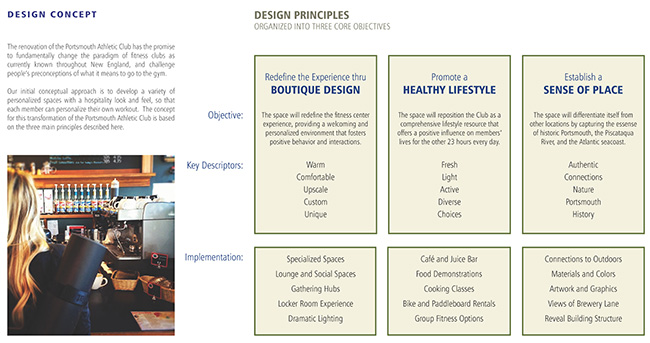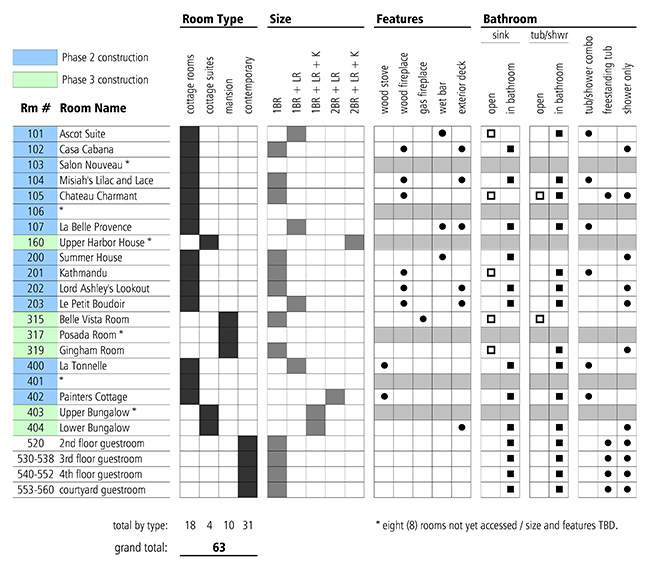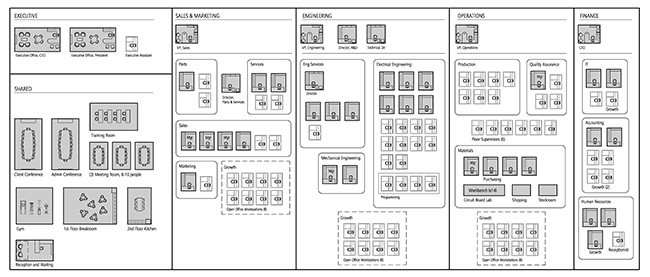Using Imagery, Narrative and Graphics to Start Off Right
Where do we begin? That’s the question we often hear when an owner is faced with the daunting list of tasks and requirements that pop up at the very start of a project. The eagerness to get started can make it tempting to jump right into a floorplan, but there are plenty of steps we like to take before the first wall is drawn.
Project startup can be a time of unknowns and anxiousness, but it is also the time of some of our most creative and thoughtful work. We often start with inspiration imagery.
We compile image boards to determine a tone for a project, establishing a mood and aesthetic direction. We start to think about materiality, color, and light. Project themes start to emerge, such as the elements that define a place, and which may influence the design. Specific products, furnishings and material options start to appear, suggesting how abstract concepts can be translated into a built space.

Here are a series of image boards for a hotel in Wyoming, exploring western themes, artifacts and colors: 


Graphic images like these have proven to be extremely valuable to establish a design direction, but we’ve also found it’s just as important to capture a project’s essence with the written word.
Lately we’ve gained a greater appreciation for a well-crafted written statement that describes the project goals. More than just a technical document that lists the required program elements, this narrative is a conceptual description of the project goals. What are your hopes and dreams? What do you wish to accomplish with a new space? What inspires you and drives you to do the work you do?
These project descriptions can get quite detailed, expanding to multiple page narratives. But while we take an expansive view of the project, we also focus in on key words and phrases as a way to drill down to the major themes.
In this example for an athletic facility, we distilled the design principles down to three core objectives: redefine the club experience through boutique design; promote a healthy lifestyle; and establish an authentic sense of place. These three objectives were each defined in one sentence, then key descriptors were listed for each goal. We then identified how each of these principles would be implemented by listing the relevant program spaces and design components:

Once the core design objectives are recorded in a clearly written statement, we continuously refer back to these words during the design process to check that the project is developing in a manner consistent with the project goals. We use the written design principles to guide our decisions along the way.
A programming phase may soon follow, in which we explore what the project components are and how they should interrelate. The way we do this is through a combination of graphic and quantitative data. We look at how best to communicate a large amount of information so it is easily understood, but also so that it guides the design decisions and eventually leads to a fitting solution.
Think of it this way: If the concept image boards and written narratives describe how your meal should taste, then the programming diagrams determine the list of ingredients and how they should be combined.
Here are a few examples:
This is a matrix of hotel room types, sizes, and amenities:

And this is a graphic visualization of a program for a large engineering and manufacturing firm:

Here is the same program in a different format, with color coding and grouping to better illustrate the departmental organization:

And this is an adjacency diagram, which is an illustration showing the important relationships between spaces. This could be for groups of people who work together, or required sequencing of spaces through a building:

When done right, each step in the process leads to the next. In this organizational diagram for a school project, the spatial relationships between rooms start to imply a building form. You can imagine how a schematic floorplan could easily follow.

The initial concept and programming process is tailored for each project, but for all projects, this is a time of imaginative thinking and expanding ideas. How we capture those ideas and focus them into a clear set of goals is how we develop a vision for a strong project design.